LK Lander rocket motors.
First up, a small mystery about extra solid rocket motors seen on some LK landers.
Now it’s well known that the LK crewed lander had small solid fuel rockets attached to the top of the legs. These would fire at the moment of touchdown, for a few seconds, to stop the spacecraft bouncing, and hold it firmly against the lunar surface. Here’s a photo I took when an LK was on loan to the London Science Museum.
Note that the rockets are vertical when the legs are deployed.
We even have video of the test version with rockets being fired! This system seems to have been very effective, and they tried it on some crazy slopes:
The last 2 seconds of this video show the motors in operation.
Now look at this RKK Energia museum photo:
The top two are clearly the hold down jets, but what is the lower one? The design is similar, but about half the length.
Here are some notes on the “ПРДП - пороховой ракетный двигатель прижатия” , PRDP - pressurized powder rocket engine.”, followed by a “Yandex” image translation.
Here are some observations I think are important, to help the analysis of the extra engines.
Engines are small, and will fire once, together, briefly.
They lack the complexity to be used as thrusters / steering.
They would push “up”, against the holding jets
If they fired when the legs were deployed, exhaust would converge, (inefficient), and impact the cabin.
The jets would fire directly up, aligned, ONLY WHEN THE LEGS WERE STOWED.
They are only found on 7A LK models, dummies used for test flights.
Lack of a cosmonaut would mean extra weight for systems on the test flights.
The attachments seem weak compared to the hold-down jets.
To me, point 5 is key, they would fire before legs are deployed, at the latest shortly after extraction from the fairings. The LK is normally shown moving (and being extracted) feet first, so burning these engines would NOT help with braking / de-orbit burn.
As they are not seen on “crewed flight” models, this suggests to me that they could compensate for something a cosmonaut would do - this also explains where the weight allowance for the extra parts would come from.
So, what does that leave us with?
I think this system was EITHER to pull the LK out of the fairings / Block D, or move it clear of the orbiter, before preparing for descent.
======================================================
Here’s a summary from “Shams” of RGANTD on “Lunar Ships”:
Here is the picture we get for the ships. Quite interesting.
This is an extract from the document "Program of scientific research on the L3 lunar ships for 1970-75". The document was drawn up in December 1969, but has not been finally agreed upon between the MOM, the MNTS for KI and the TsKBEM. There are no signatures.
So:
LK #7 and 7A are unmanned, with a stay on the Moon of up to one day and takeoff without docking with the LOK (unmanned #6A, 6A1). Estimated launch dates are the 2nd quarter of 1970.
LK #7A1 and 8 are unmanned, with a stay on the Moon of up to one month without takeoff (with RIG). The 4th quarter of 1970. The L3 for these launches will include, respectively, LOK #6A2 (unmanned) and LOK #8 (manned).
LK #8A, 8A1 – unmanned, with a stay on the Moon of up to one day, takeoff and docking with manned LK #8A and 8A1. 3rd quarter of 1971.
LK #9 and 11 – reserve (for evacuating the cosmonaut from the Moon). LK #9 and 11 – unmanned.
LK #10 and 12 – manned expeditionary. LK #10 and 12 – manned.
Estimated launch date of LK #9 and 10 – 4th quarter of 1971.
LK with numbers 7 are not in the documents.
=========================================================
Antonov An-225 testing
Here’s a chunk from a book Vadim Lukasevich is working on, covering Buran. Nobody knows more than him, you can often find him posting on Facebook.
All text and images are via Vadim, he owns copyright on the text.
He also created the BURAN.RU website, which I recommend highly.
=========================================================
Today is exactly 36 years of the first flight of Mriya with Buran on the landing complex of the orbital spacecraft at Baikonur (Yubileyny airfield).
The AN-225 first landed at the Baikonur OC PC on May 10, the next day the Buran was put on it at the reloading pad, on May 12 the Mriya with the Buran performed taxiing and jogging, including high-speed jogging with front landing gear detachment, and on May 13, 1989 the first flight with the Buran on external suspension took place.
Further fragments from the manuscript of the future book:
"The appearance of "Mriya" at Baikonur was preceded by a lot of organizational work. It was necessary to work out not only the program of testing the aircraft with Buran (how many flights, what kind of flights, etc.), but also to solve all related issues, of which there were a lot. For example, it was not clear how to perform a long flight (which became test flight #47 lasting 4 hours and 6 minutes) from Gostomel (Kiev) to Yubileyny (Buran landing complex at Baikonur). It came to the point that the USSR National Air Traffic Control Service (ATC) refused to release and fly an uncertified airplane, which had just started flight tests, in the airspace of the country. At the same time, the military also completely withdrew from the issues of ensuring all flights: by that time, the Air Force had already lost all interest in the Buran, and the rocket engineers (GUKoS), who were in charge of the Yubileyny airfield, flatly refused to participate in the work on the Mriya on the grounds that the tests were the prerogative of the developers, i.e. industry.
In addition, it was necessary to solve the issues of test support - where to refuel with aviation fuel, what kind of fuel, who would be responsible for it, at whose expense. There were also domestic issues - where and how to accommodate and feed the crew and numerous specialists involved in the tests. Here is how the technical manager of all the work on the landing complex, deputy chief designer of NPO "Molniya" Vladislav Studnev recalls it:2
"There were a lot of questions - they seemed to be small, but no one wanted to take them on. GUKOS completely withdrew from everything, even from feeding the pilots. I ask them:
- Why don't your flight supervisors (RPs) participate in the flights of the Mriya?
- They don't have the right. Look at the documentation.
And I wrote “flight tests” everywhere in the documentation. This was necessary because it was indeed a flight test, and secondly, thanks to this, the pilots received the appropriate money for each flight at “test” rates. But if we talk in essence, without offending any of the military - they were not ready for such a difficult job as flight leadership. That's why even when we were flying the “troika” [3M-T] flights, we always brought our RPs from LII. And even more so with “Mriya” - we had to bring our chief of RP service from Gostomel. It was he who was in charge of all the flights of “Mriya”.
Therefore, despite the fact that the military took some incomprehensible position, we did not pay much attention to them, especially since we were in charge of the flights. We were so euphoric that we didn't care about anything. At that time we were really “on a horse”, on a powerful psychological high, clearly knowing what to do and how to do it. Our heads were like a spinning gyroscope without precession, and we were firmly walking in a straight line. The only thing required from the military was “clean the airfield, set up a cordon and organize refuelling, guard us and do not interfere”.
In order to solve all issues on the forthcoming tests of AN-225 with Buran, several preliminary meetings were held at LII with participation of representatives of Antonov Design Bureau and NPO Molniya, where the test program was drawn up and all technical issues were solved. By that time, a decision had already been made at the principle level to demonstrate the Mriya with Buran at the Paris Air Show Le Bourget-89, so the program of test flights was drawn up in such a way as to confirm the possibility of a safe flight of the Mriya-Buran combination to Paris and back.
On April 27, 1989, following the results of the 44th record flight of AN-225, the Methodical Council of the Ministry of Aviation Industry (under the leadership of the head of the Gromov LII, Doctor of Technical Sciences, Professor Konstantin Vasilchenko) was held, which comprehensively reviewed the results of the first stage of tests and allowed “Mriya” to the next stage at Baikonur - air transport tests. The conclusion of the IAP Methodological Council noted the absence of frequency tests of the “Mriya-Buran” aircraft complex, so the permission for departure was given with a flight speed limitation (up to 400 km/h), which could be revised based on the results of the tests.
In the final form, it was decided that all work at Baikonur would be conducted under the auspices of the flight tests of the “Mriya”, conducted by the Antonov Design Bureau, but on the territory of the landing complex of NPO “Molniya”, and with the participation of only representatives of industry. The military was assigned a secondary supporting role at the level of “perimeter protection”.
NPO “Molniya” was responsible for all issues of preparation and realization of flight tests. By the order of G.E.Lozino-Lozinsky, Gennady Dementiev, First Deputy General Director - Chief Designer of NPO “Molniya”, was appointed as the head of An-225 flight tests at Baikonur, Vladislav Studnev, Technical Manager of Buran landing complex (Deputy Chief Designer of “Molniya”), O.S.Dolgikh, Head of flight service, N.P.Yaloyan, Head of LIDB of V.M.Myasishchev EMZ, was appointed as his deputy.
The consolidated ground team of specialists that provided the flights included representatives of O.K.Antonov Design Bureau (headed by the head of LEADB, deputy general designer A.G.Bulanenko and deputy chief designer of AN-225 A.G.Vovnyanko), flight director - head of ATC service of Gostomel airfield A.I.Kozyatinsky, as well as representatives of “Khartron” and a number of other enterprises and organizations.
The Antonovs took a very responsible approach to Baikonur - in addition to the “Mriya” itself, which brought accompanying automotive equipment in the cargo hold, the factory's AN-72 support/accompanying aircraft, piloted by Valery Shlyakhov, and the two-seat L-39, flown by Alexander Tkachenko, also an Antonov pilot, flew together with it to Yubileyny. Both airplanes (L-39 and AN-74) provided reliable movie and video support of “Mriya” during all flights at “Yubileyny”. The light L-39 was also used as a weather scout.
<...>
While “Buran” was being hoisted on An-225, a field meeting of the IAP Methodical Council under the leadership of K.K.Vasilchenko was held in V.Studnev's office in the United Command and Dispatch Center (UCDC). By this meeting the whole program of the forthcoming tests with the last refinements and adjustments was worked out once again, assuming the performance of 8 test flights.
On May 13, 1989, the 48th test flight of the Mriya took place, and the first with Buran on external suspension. On this day, the AN-225 finally performed as an airlifter and carrier aircraft.
In a flight (designated in the test program as No. 48/1) lasting 1 hour 30 minutes with a takeoff weight of 474 tons, an altitude of 2500 m and a prescribed speed of 400 km/h were reached. To correct the rear alignment of the aircraft in all flights with Buran, a balancing cargo (ballast) of 25 tons in the nose of the internal cargo compartment of the Mriya was installed in the form of a moored Ural truck with a repair kit for aircraft maintenance and a set of cylinders for the landing gear.
The main task of the first flight was “The first departure from the OK ‘Buran’ with the check of stability and controllability of the bundle at takeoff, in horizontal flight and at landing”.
I should add: the crew of the “Mriya” during the tests at Baikonur in May 1989 consisted of commander A.V.Galunenko, co-pilot S.A.Gorbik, senior flight engineer A.M.Shuleschenko, flight engineer V.A.Gusar, navigator S.F.Nechaev, flight engineer V.K.Belousov and leading flight test engineer M.G.Kharchenko.
Here’s hoping Vadim’s book gets published soon, and is available in the west!
This editions cool image:
Three for you this time! AI enlarged photos showing the installation in Baikonur of a large scale N1 model! (It’s a shame it’s not more detailed though).
This editions cool link:
Rocket Planes for Science and Combat: What the Soviet Orbital Fighter Was Like.
Russian language, so computer translation is recommended.
This edition’s special 7 day download:
Source documents covering features of the LOK’s with a computer translation.


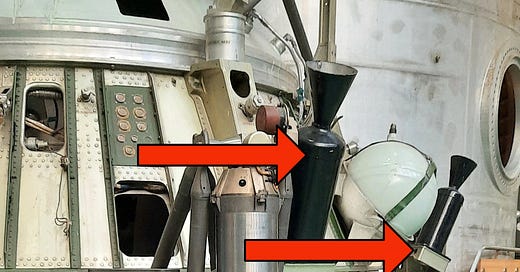


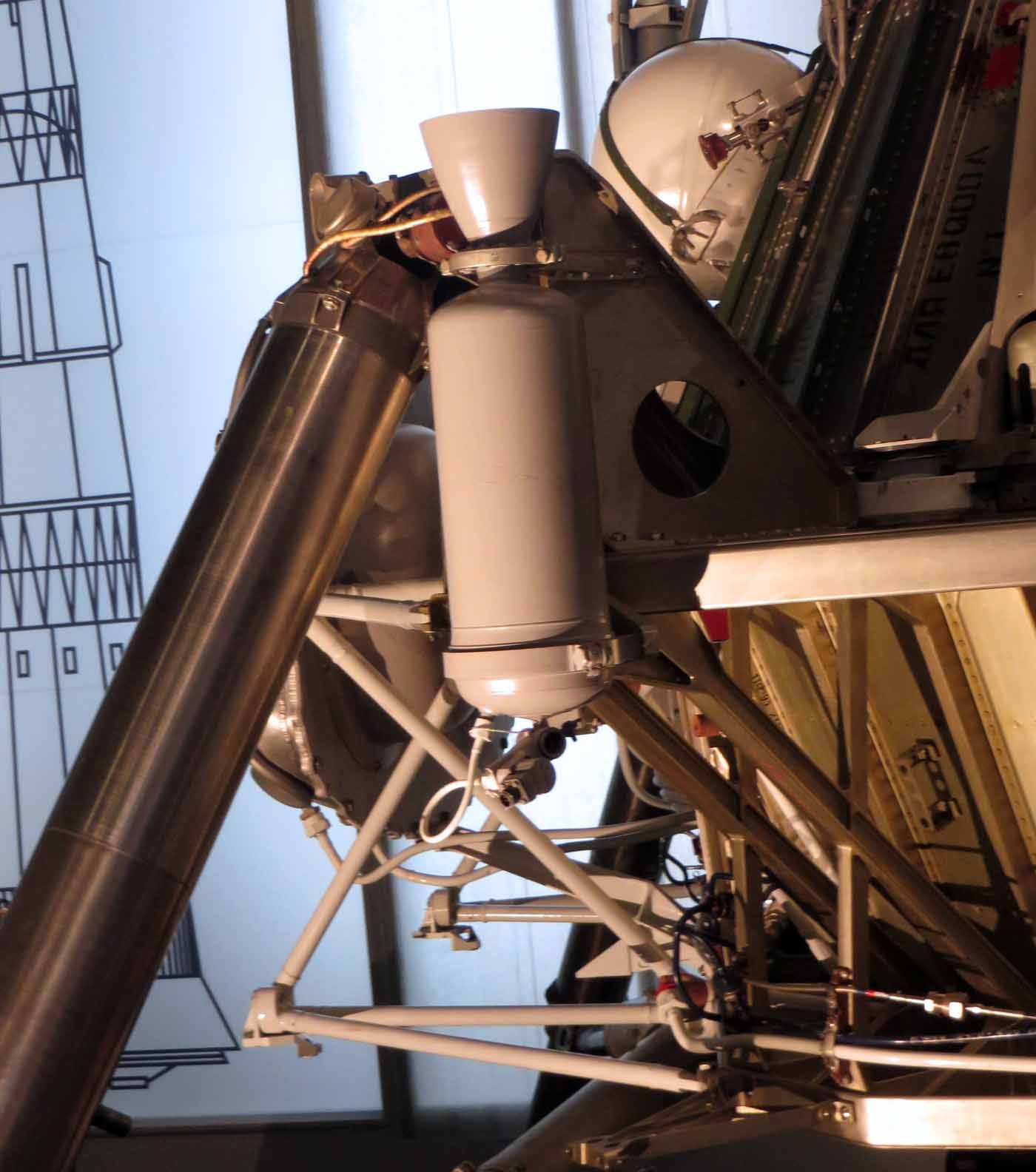

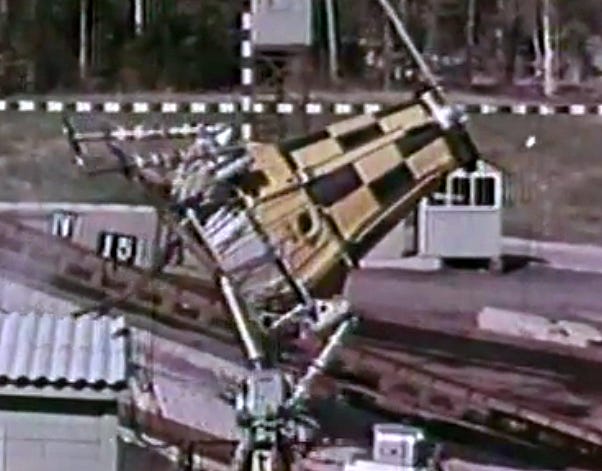


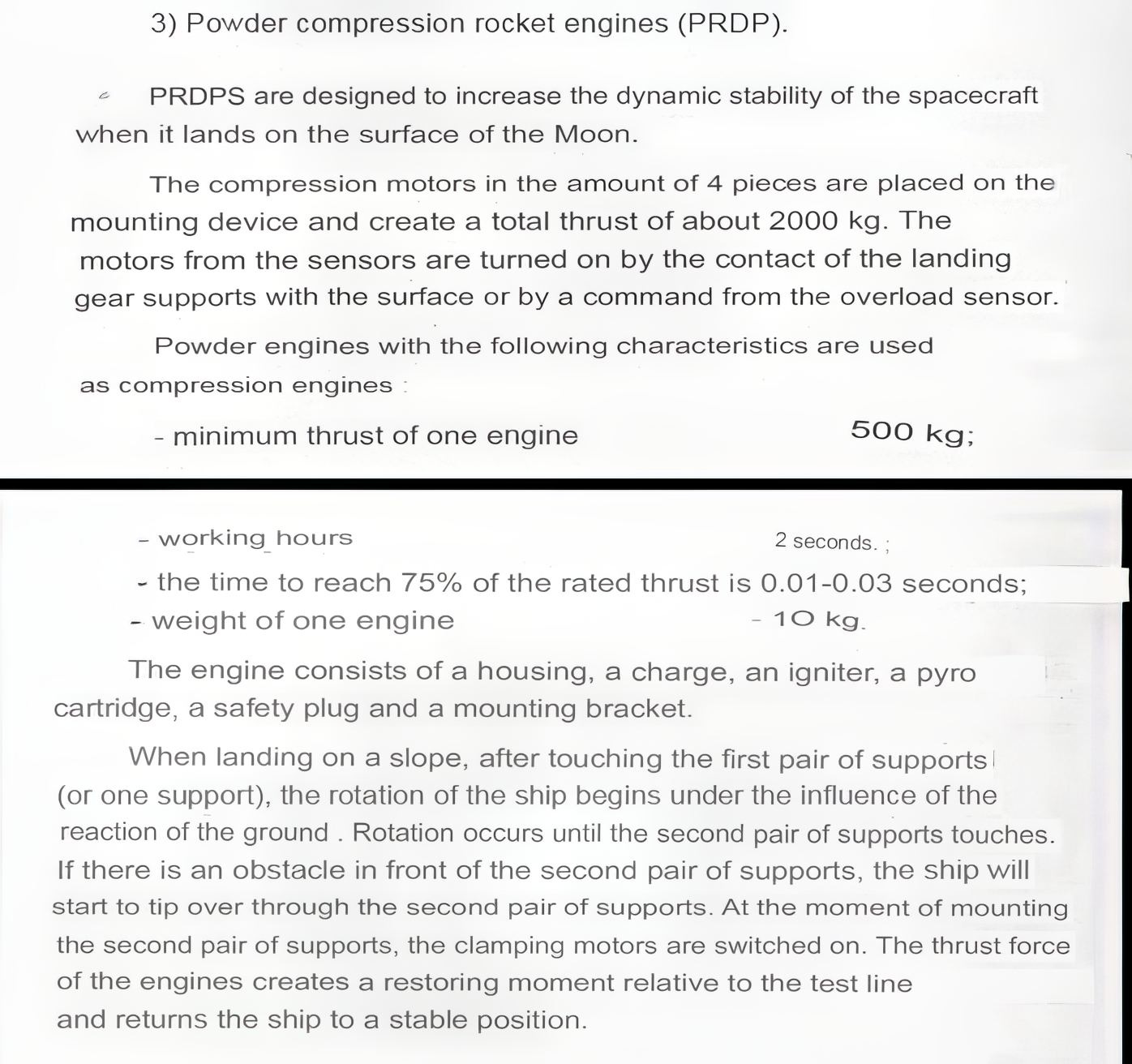
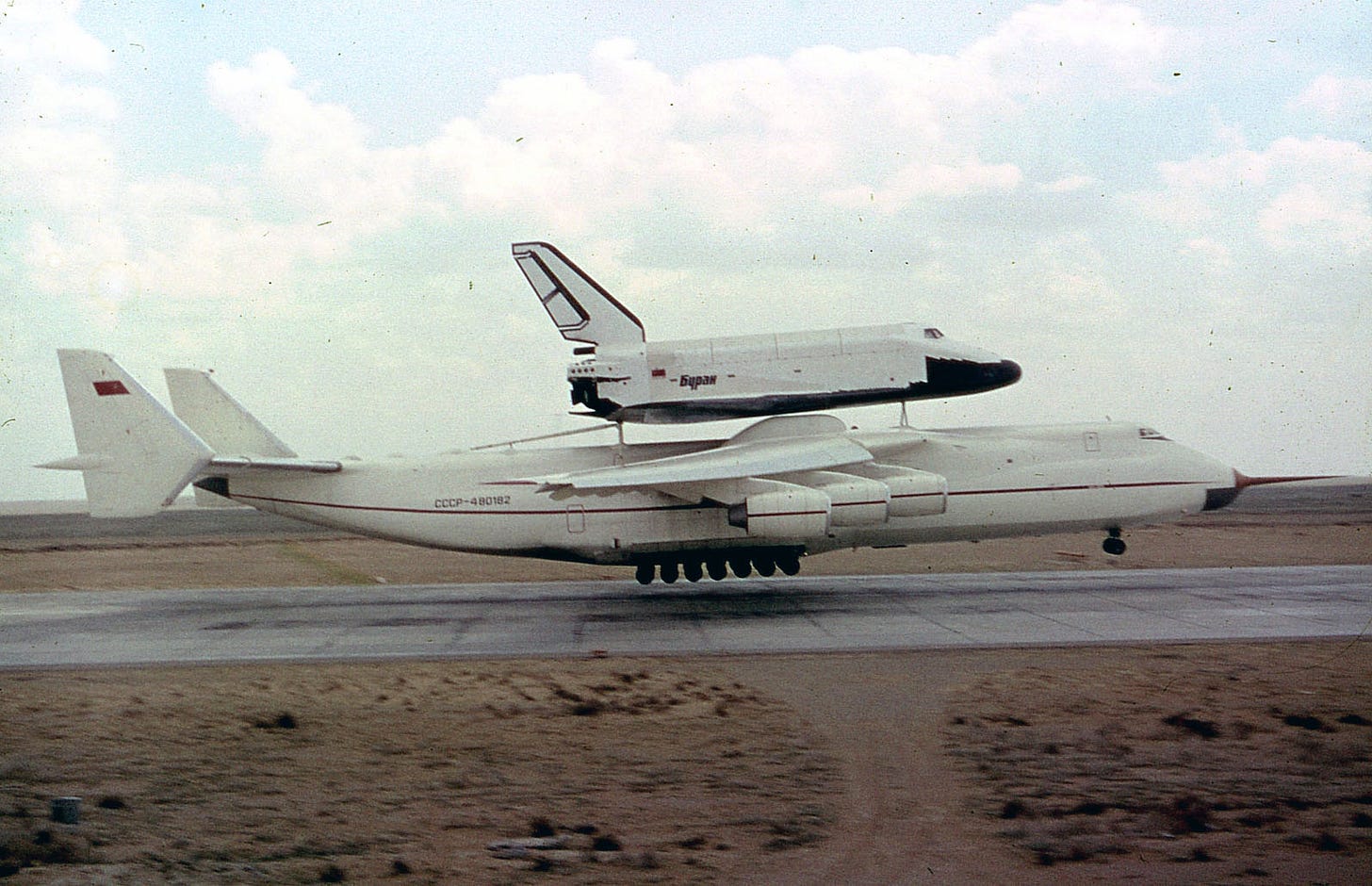

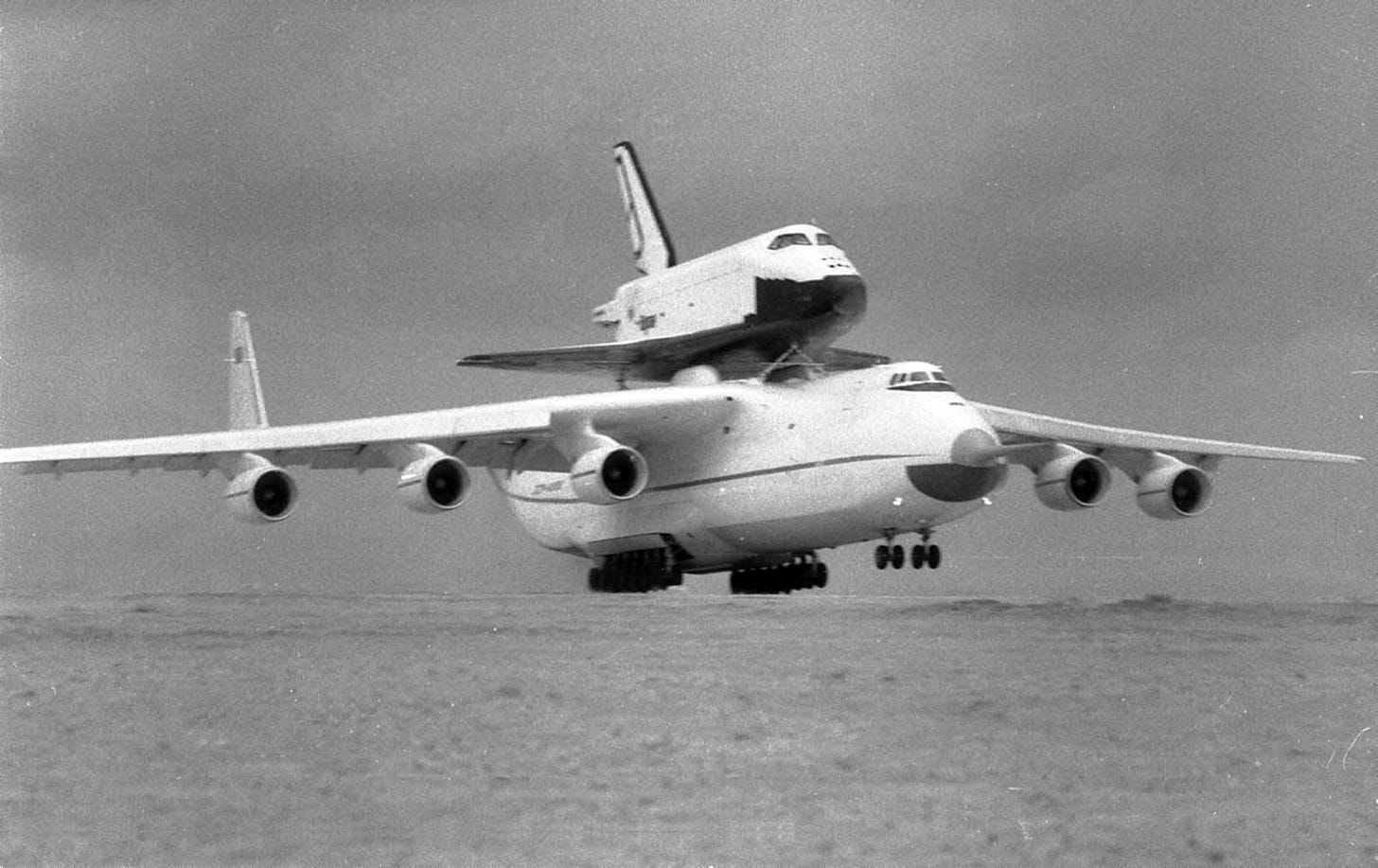




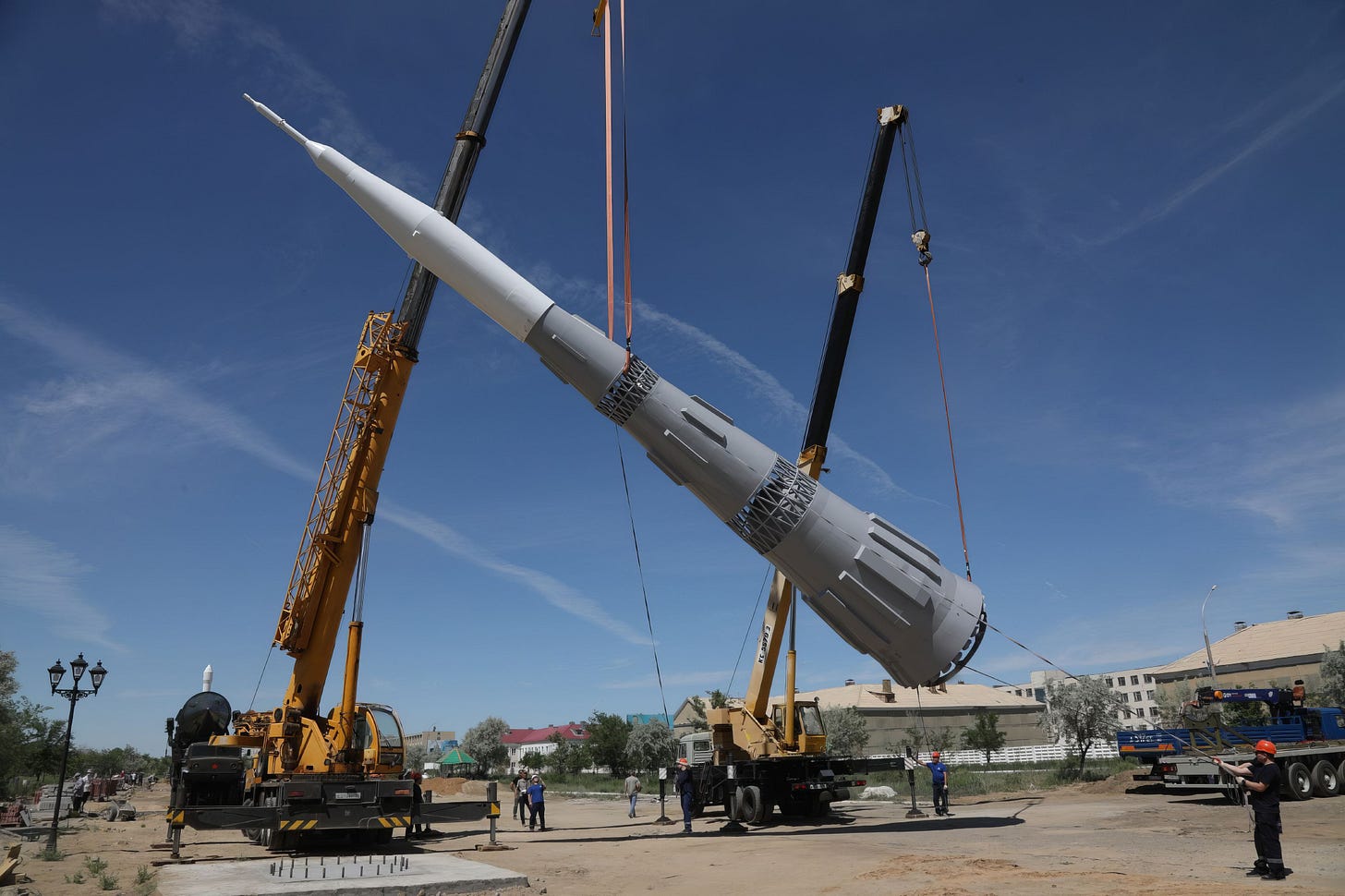
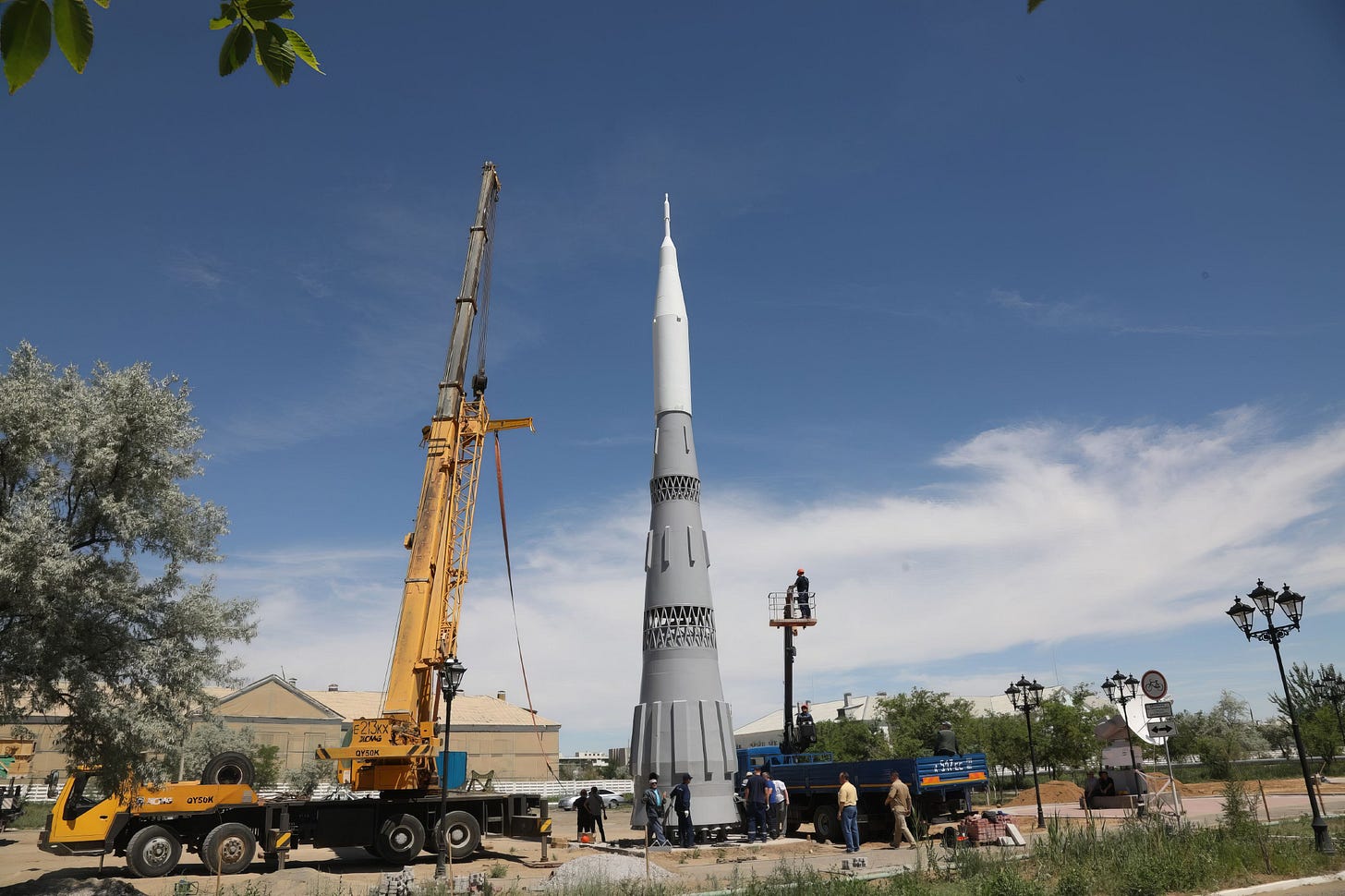
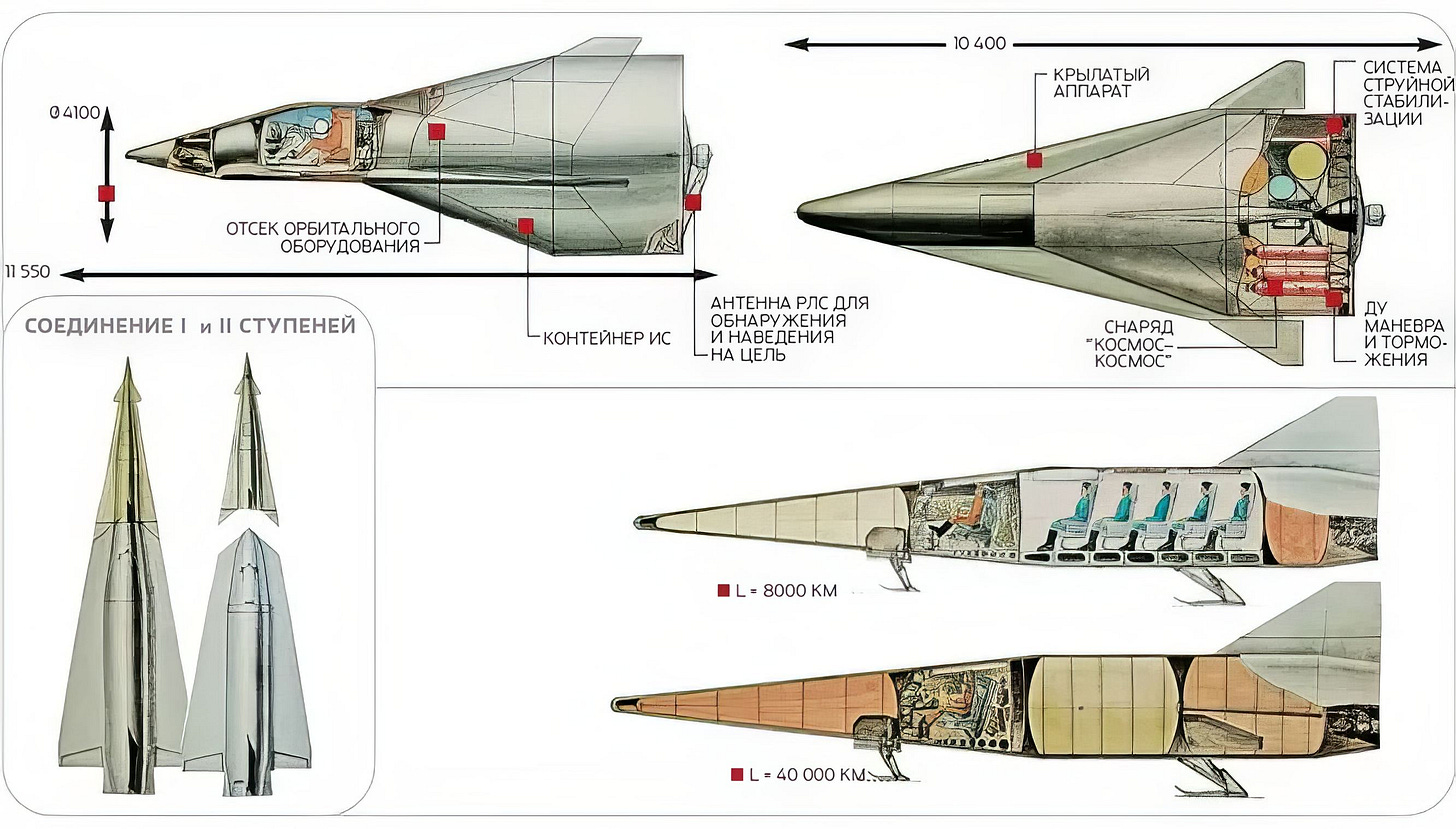

Just another enlightening issue, Nick,. It's kinda shocking seeing how committed to achieving a crewed lunar landing in the same timeframe as Apollo